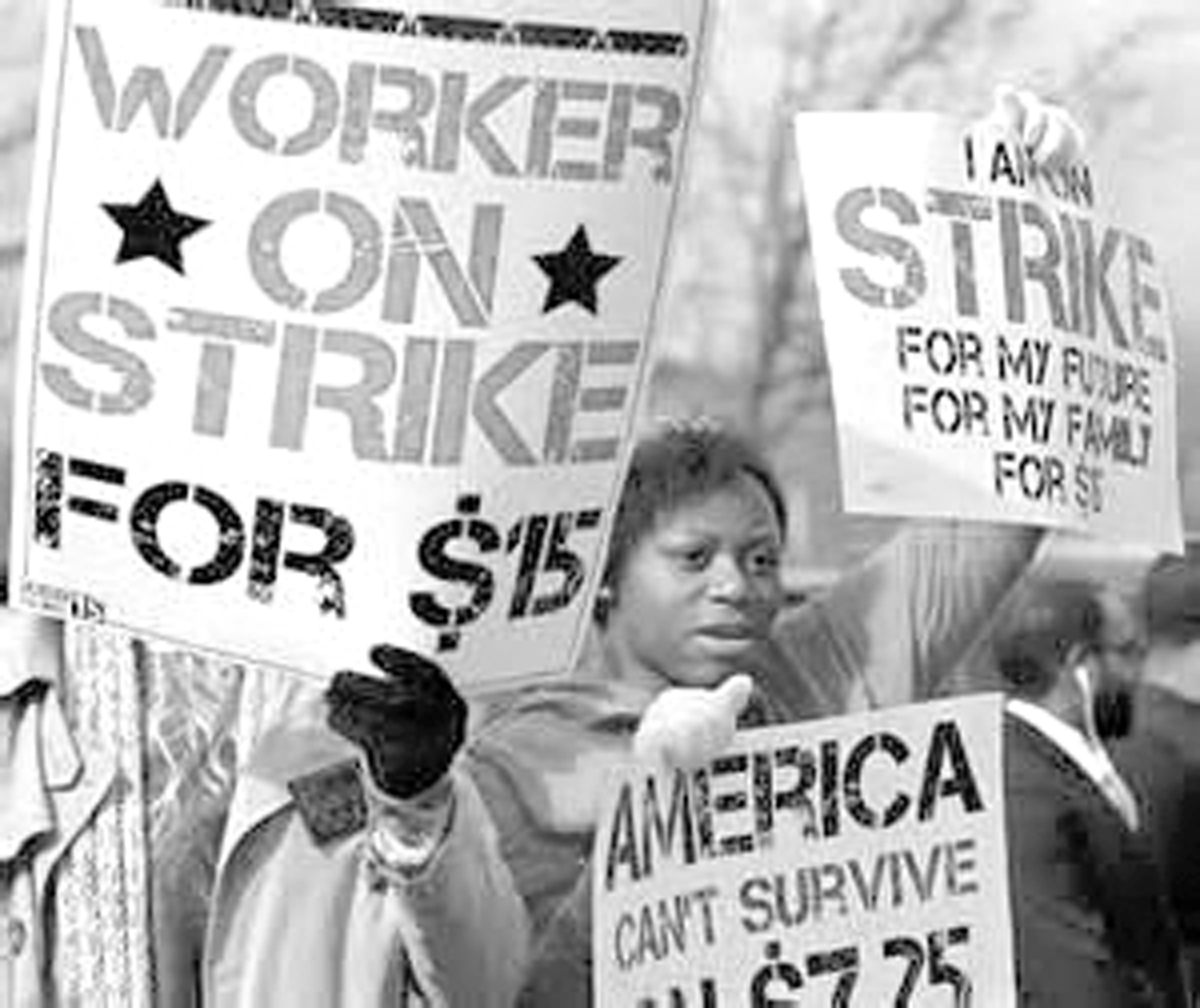Minimum-wage workers can’t afford the rent
6th June 2016 · 0 Comments
By Frederick H. Lowe
Contributing Writer
Wage stagnation and a shortage of affordable housing are blamed
(Special from NorthStar-News Today) – James McMillian, lll, a postal worker and Vietnam vet, with a white Imperial mustache, white sideburns and a white goatee, ran for New York governor on the “Rent Is Too Damn High” party platform.
McMillian discussed how families, particularly households headed by women, couldn’t afford to pay their rent and feed their children.
 During a 2010 debate for New York governor, the audience laughed at him when he raised the issue in his opening statement. It turns out he was ahead of his time.
During a 2010 debate for New York governor, the audience laughed at him when he raised the issue in his opening statement. It turns out he was ahead of his time.
Workers earning the prevailing minimum wage can’t afford to rent modest two-bedroom apartments because of wage stagnation. This is coupled with a severe shortage of low-cost housing units, according to a report published by the National Low Income Housing Coalition, which is based in Washington, D.C.
The study uses the term “housing wage,” which differs from a worker’s hourly wage.
Titled “Out of Reach 2016: No Refuge for Low Income Renters,” the study calculated the housing wage, or what an employee working 40 hours a week must earn to rent a modest two-bedroom apartment without spending more than 30 percent of household income on rent and utilities—for every state, metropolitan area and country in the country.
76.3 percent of workers making at or below the minimum wage are white, 17.3 percent are Hispanic or Latino, and 15.4 percent are Black. Two-thirds of workers earning the minimum wage or less are working in service positions, mostly in food preparation and serving-related jobs.
To rent a two-bedroom apartment at fair market value, a full-time worker must earn $20.30 per hour, which is $5 more than the average hourly wage of U.S. renters. Although service workers are pushing for a $15 per hour minimum wage, that would not be enough for them to rent a two-bedroom apartment.
The situation can be dire.
“A worker earning the federal minimum wage of $7.25 per hour would need to work nearly three full-time jobs or approximately 112 hours per week for all 52 weeks of the year in order to afford a two-bedroom apartment at the Department of Housing and Development’s Fair Market Value,” the report stated.
The housing wage differs by state with Hawaii being the most expensive. In Hawaii, the housing wage for a two-bedroom apartment is $34.22 per hour. Arkansas’s housing wage is $13.26 per hour for a two bedroom apartment, making it the most affordable.
The study notes that the demand for rental housing is at the highest level since the 1960s.
“In the past decade alone, the U.S. has added nine million rental households but only 8.2 million rental housing units to its housing stock. Vacancy rates are at their lowest levels since 1985 and rents have risen at an annual rate of 3.5 percent, the fastest pace in three decades, the report said.
The study reported that between 2003 and 2013, the number of low-cost units renting for less than $400 increased by 10 percent, but the number of renters for those units increased 40 percent.
“The nation’s 10.4 million extremely low income households currently face a shortage of 7.2 million affordable and available rental units, leaving 31 affordable and available units for every 100 extremely low income households,” the report said. An extremely low-income household has an income at or below 30 percent their area’s median income.
Wage stagnation and income inequality also contribute to housing problems for the working poor.
“From 2007 to 2015, the bottom 10 percent of wage earners saw a 0.2 percent increase in real hourly wages, while the top five percent saw an 8.7 percent increase, continuing a long-term trend of growing income inequality,” the report stated.
This article originally published in the June 6, 2016 print edition of The Louisiana Weekly newspaper.



